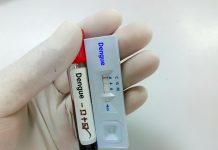Digital biomarker can identify which cases of mild cognitive impairment will develop into Alzheimer’s so that early interventions can be put in place to prevent the onset of the disease
Mild cognitive impairment is a multi- faceted ailment that has long bedeviled researchers due to the unpredictable nature of its progression. Some individuals with mild cognitive impairment (MCI) later develop Alzheimer’s disease syndrome (ADS), while others remain at their same level of MCI or develop other forms of dementia. Finding a way to identify those whose MCI will convert to Alzheimer’s before they become symptomatic is key to developing early interventions that can lessen the disease’s severity or stop its progression entirely.
Linking eye movement patterns and cognition
The digital health and artificial intelligence company ViewMind has employed a novel cognitive digital biomarker – tracking eye movement and pupil response – to help predict the conversion of mild cognitive impairment (MCI) to Alzheimer’s disease. As they found in a recent longitudinal study, this diagnostic technique holds great promise as an affordable and accessible early intervention for Alzheimer’s.
Certain well-defined eye movement patterns have been shown to indicate healthy visual short-term memory, a reflection of a strong connection between eye movement and cognition. As ViewMind has discovered, recognising deviations from such patterns is a key way to locate signs of Alzheimer’s as much as 20 years before symptoms begin to present. Not only can these differences indicate that dementia is present; they can also differentiate Alzheimer’s dementia from other types such as Parkinson’s Disease or fronto-temporal dementia.
“Finding a way to identify those whose MCI will convert to Alzheimer’s before they become symptomatic is key to developing early interventions that can lessen the disease’s severity or stop its progression entirely.”
ViewMind built on previous studies, which showed that viewing fixation duration can be affected by memory and processing load, as well a previous study from ViewMind and partner institutions(1) which reported that oculomotor behavior related to cognitive tasks could serve as a biomarker for Alzheimer’s.
ViewMind then created a visual exploration exercise to measure impaired cognitive processes among its participants with MCI by tracking their eye movements.
ViewMind’s longitudinal study
In their three-year longitudinal study (2017–2020), forthcoming Journal publication, researchers at ViewMind compared the eye movement of patients with no cognitive impairment to that of those with mild cognitive impairment as the participants performed a visual short-term memory binding (VSTMB) task. The team found that specific patterns in eye movement and pupil response among participants with MCI positively corresponded with their likelihood of later converting into ADS.
The study, which assessed 105 participants (63 with MCI and 42 controls), employed ViewMind’s proprietary digital biomarker, an AI application that detects patterns in eye movement associated with various forms of cognitive decline. Participants completed neurocognitive and oculomotor (VSTMB) assessments at baseline followed by annual clinical evaluations to monitor the progression of cognitive decline throughout the three years of the study. The VSTMB task required participants to view bicolored objects and recall their colours either as individual features or as appearing within a unified representation.
Based on the participants’ ability to recall the colours in a unified representation, ViewMind’s sensitive AI technology was able to conclusively predict which participants demonstrated processing difficulties consistent with cognitive decline due to Alzheimer’s. These results correlated strongly with those from traditional cognitive screening tools such as the Minimental State Examination (MMSE), the INECO Frontal Screening (IFS), and the Addenbrook’s Cognitive Examina- tion Revised (ACE-R).
Of the 63 participants with mild cognitive impairment, researchers predicted that 36 would later develop ADS based on their initial assessments, with the remaining 27 remain- ing in their current state of MCI or progressing to other forms of dementia (fronto-temporal or Parkinson’s Disease). The results of the study showed a 94% accuracy in predictions of conversion to Alzheimer’s syndrome based on analysis of the digital biomarker and 100% accuracy of predicting non-converters.
Early detection of mild cognitive impairment is challenging, but critical
One of the most significant challenges in fighting Alzheimer’s disease is find- ing a way to diagnose the disease before symptoms develop. Even when symptoms begin to present, they are often indistinguishable from common signs of normal aging, such as forgetfulness and occasional disorientation.
By the time a person is showing enough possible signs of Alzheimer’s to warrant a diagnostic procedure, the disease is typically already at a very advanced stage. Beta-amyloid and Taub protein formations – two of the key indicators of Alzheimer’s disease – can be present in brain cells for years and even decades before symp- toms become detectable. ViewMind recognised that so much more could be done for people with Alzheimer’s if the signs could be detected far sooner.
Using the digital biomarker to assess conversion of MCI to Alzheimer’s also presents a possibility for normalizing regular cognitive assessments as a preventive rather than retroactive measure. ViewMind’s eye-tracking technology can be used widely and at a comparatively low cost, meaning that it could eventually become part of a regular cognitive check-up for everyone, not just individuals experi- encing cognitive difficulties.
Future steps
Current diagnostic tools for Alzheimer’s disease are costly and sometimes risky. Even more problematic, they are currently only utilised once the disease has advanced significantly and cognitive damage is likely irreversible. ViewMind’s highly sensitive diagnostic technology makes it possible to detect the first signs of Alzheimer’s early in the disease’s development, long before a patient becomes symptomatic. With rates of Alzheimer’s cases expected to triple by 2050, the promise of a safe, afford- able, and accessible diagnostic option that could help normalise routine cognitive check-ups is a welcome development indeed.
References
1) Fernandez G, Orozco D, Agamennoni O, Schumacher M,Sanudo S, Biondi J, Parra MA. Visual Processing during Short- Term Memory Binding in Mild Alzheimer’s Disease. J. Alzheimer’s Dis. 2018; 63(1):185-194.
Please note: This is a commercial profile
© 2019. This work is licensed under CC-BY-NC-ND.








